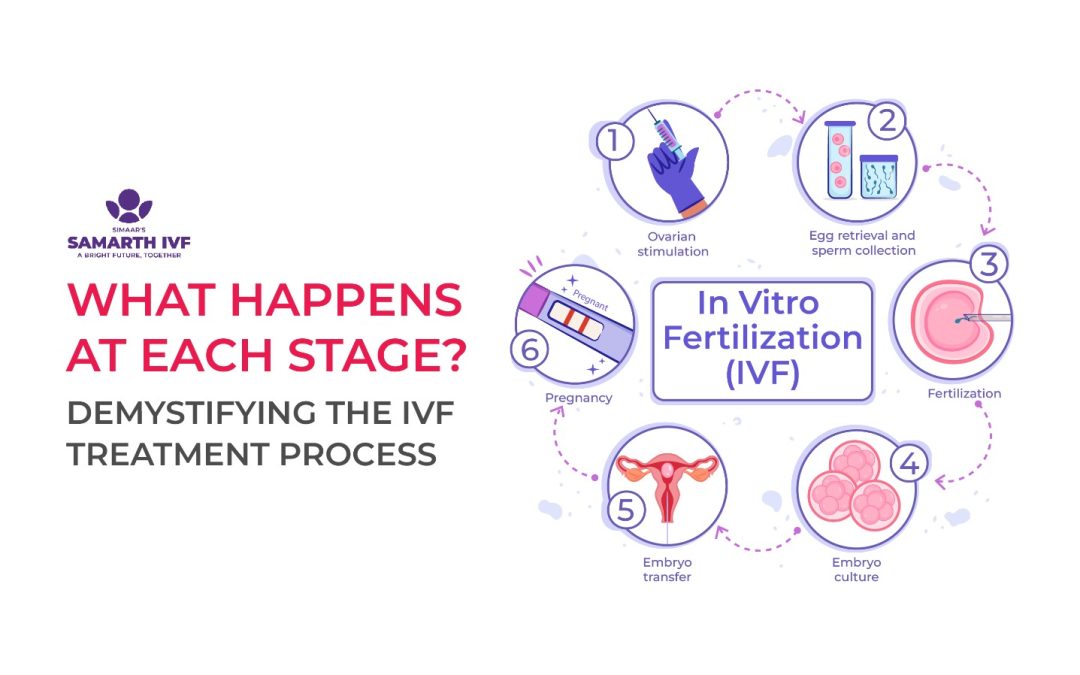In vitro fertilization (IVF) can feel like a complex medical journey, but by understanding each stage of the process, you can approach it with more confidence. Here’s a breakdown of what happens at each key step of IVF treatment:
Step 1: Consultation and Initial Evaluation:
- This initial phase involves a meeting with a fertility specialist. They will discuss your fertility history, medical records, and reasons for seeking IVF.
- A physical exam and blood tests might be performed to assess your overall health and hormone levels.
- Your partner will also likely undergo semen analysis to evaluate sperm count, motility, and morphology (shape).
Step 2: Ovarian Stimulation (Ovarian Hyperstimulation – OHSS):
- If you decide to proceed with IVF, this stage focuses on stimulating your ovaries to produce multiple mature eggs in one cycle, compared to the single egg released during natural ovulation.
- Fertility medications are administered through injections or nasal sprays to achieve this stimulation.
- Regular monitoring through blood tests and ultrasounds is crucial to track your response to medication and ensure optimal egg development.
Step 3: Egg Retrieval:
- Once the eggs reach maturity, a minimally invasive procedure called transvaginal oocyte retrieval is performed.
- Using ultrasound guidance, a thin needle is inserted through the vagina to retrieve the mature eggs from the ovarian follicles.
- Light sedation is typically used for comfort during this brief procedure.
Step 4: Sperm Retrieval and Fertilization:
- Sperm can be collected through masturbation or surgical extraction depending on the situation.
- In the laboratory, the retrieved sperm is mixed with the eggs in a process called insemination.
- In some cases, a procedure called intracytoplasmic sperm injection (ICSI) might be used, where a single sperm is directly injected into an egg to facilitate fertilization.
Step 5: Embryo Development and Monitoring:
- The fertilized eggs are then monitored closely in a controlled environment to allow for embryo development.
- During this stage, cell division occurs, and the fertilized eggs become blastocysts, the early stage of an embryo.
Step 6: Embryo Transfer:
- A certain number of healthy blastocysts are chosen for transfer into your uterus.
- A thin catheter is used to carefully place the embryos into the uterine lining during a short, outpatient procedure.
Step 7: Luteal Phase Support and Pregnancy Test:
- After embryo transfer, medications might be prescribed to support the uterine lining and increase the chances of implantation.
- A pregnancy test is typically performed a few weeks after embryo transfer to determine if implantation has been successful.
IVF can be a life-changing treatment for couples struggling with infertility. By understanding each stage of the process, you can feel more empowered and prepared for this journey towards parenthood.

